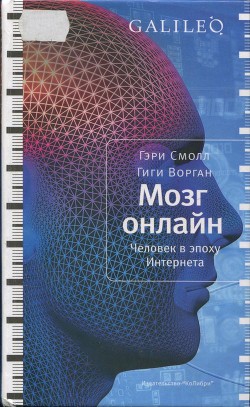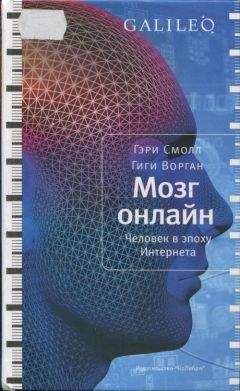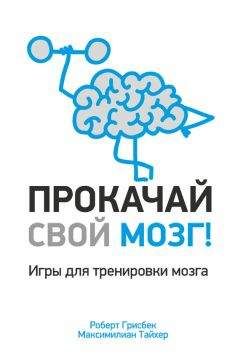Мозг онлайн. Человек в эпоху Интернета - Смолл Гэри

Помощь проекту
Мозг онлайн. Человек в эпоху Интернета читать книгу онлайн
190. Geller A. Bosses keep sharp eye on mobile workers via GPS. Associated Press. January 3, 2005, http://www.workrights.org/in_the_news/in_the_news_associatedpress.html
191. Finder A. For some, online persona undermines a resume. The New York Times. June 11, 206
192. Cohen R. Online extracurriculars. The New York Times Sunday Magazine. March 11, 2007
193. Sullivan M.S. Law May Curb Cellphone Camera Use. PCWorld.com. July 23, 2004, www.pcworld.com/article/id,117035-page,1/article.html
194. Bryan-Low C. To catch crooks in cyberspace, FBI goes global. The Wall Street Journal. November 21, 2006
195. Meyer J. Extremists are homing in on the Internet, says Gonzales. Los Angeles Times. August 17, 2006
196. Bloom F. E., Beal M. F., Kupfer D. J. (eds). The Dana Guide to Brain Health. The Dana Press. New York, 2003
197. Nitschke J. B., Sarinopoulos I., Mackiewicz K. L, Schaefer H. S., Davidson R. J. Functional neuroanatomy of aversion and its anticipation. Neuroimage 2006; 29:106-116
198. Cohen L. P. Internet’s ubiquity multiplies venues to try web crimes. The Wall Street Journal. February 12, 2007
199. Bryan-Low С. To catch crooks in cyberspace, FBI goes global. The Wall Street Journal. November 21, 2006
200. Yuan L Murder, she texted: Wireless messaging used to fight crime. The Wall Street Journal. July 2, 2007
201. Saranow J. The minutes of our lives. The Wall Street Journal. March 2, 2007
202. Lenhart A., Fox S. Bloggers: A portrait of the internet’s new storytellers. Pew Internet & American Life Project. Washington, DC, 2006
203. Studios enlist blowers for Oscar campaigns, ruffling feathers in Hollywood hierarchy. The Wall Street Journal. February 8, 2007
204. Nagourney A. Politics faces sweeping change via the Web. The New York Times. April 2, 2006. www.workrights.org/in_the_news/in_the_news_associatedpress.html
Schatz A. Candidates find a new stump in the blogosphere. The Wall Street Journal. February 14, 2007
205. Comscore.com. Social networking sites continue to attract record numbers as MySpace.com surpasses 50 million U.S. visitors in May. June 15, 2006, www.comscore.com/press/release.asp?press=906
206. Noveck J. YouTube follows the campaign trail. Los Angeles Times. July 6, 2007
207. The Internet’s broader role in Campaign 2008. Pew Internet & American Life Project. January 11, 2008. http://pewresearch.org/pubs/689/the-internetsbroader-role-in-campaign-2008
208. PQ Media’s Po litical Media Buying 2008: Preliminary Forecast Analysis. http://www.pqmedia.com/political-media-buying-2008.html
209. Amodio D. M., Jost J. T., Master S. L, Yee C. M. Neurocognitive correlates of liberalism and conservatism. Nature Neuroscience 2007; 10: 1246-1247
210. Kaplan J. T., Freedman J., Iacoboni M. Us versus them: political attitudes and party affiliation influence neural response to faces of presidential candidates. Neuropsychologia 2007; 45:55-64
211. Ercoli LM, Siddarth Р, Huang S-C, et al. Perceived loss of memory ability and cerebral metabolic decline in persons with the apolipoprotein E-4 genetic risk for Alzheimer’s disease. Archives of General Psychiatry 2006; 63:442-448
212. Silverstein S. Real world 101: Colleges teach dining, taxes, life. Los Angeles Times. June 10, 2006
213. Ybarra O., Burnstein E., Winkielmon P., et al. Mental exercising through simple socializing: Social interaction promotes general cognitive functioning. Personality and Social Psycholog у Bulletin 2008; 34:248-59
214. Chayer C., Freedman M. Frontal lobe functions. Current Neurolog y and Neuroscience Reports 2001; 1:547.
215. Blakeslee S. A small part of the brain, and its profound effects. The New York Times. February 6, 2007
216. Naqvi N.H., Rudrauf D., Damasio H., Bechara A. Damage to the insula disrupts addiction to cigarette smoking. Science 2007; 315: 531–534.
217. Koenigs М., Young L, Adolphs R., et al. Damage to the prefrontal cortex increases utilitarian moral judgments. Nature 2007; 446:865-866
Carey B. Brain injury said to affect moral choices. The New York Times. March 22, 2007
218. King J. A., Blair J. R., Mitchell D. G. X, Dolan R. J., Burgess N. Doing the right thing: A common neural circuit for appropriate violent or compassionate behavior. Neuroimage 2006; 30:1069-1076
219. Williams L. M., Brown K. J., Palmer D., et al. The mellow years?: Neural basis of improving emotional stability over age. Journal of Neuroscience 2006; 26:6422-6430
220. Begley S. Parts of brain seem to get better with age. The Wall Street Journal. February 17, 2007
221. The teen driver: Committee on Injury, Violence, and Poison Prevention and Committee on Adolescence. Pediatrics 2006; 118:2570-2581
222. Centers for Disease Control and Prevention. Webbased Injury Statistics Query and Reporting System (WISQARS) [Online]. (2006). National Center for Injury Prevention and Control, Centers for Disease Control and Prevention (producer), www.cdc.gov/ncipc/wisqars
223. Williams et al. Journal of Neuroscience 2006: 26: 6422-6430
224. Leclerc C. M., Hess Т. M. Age differences in the bases for social judgments: Tests of a social expertise perspective. Experimental Aging Research 2007; 33:95-120
Begley S. The upside of aging. The Wall Street Journal. February 17, 2007.
225. Foreman J. It seems all those birthdays may be making you happy. Los Angeles Times. July 16, 2007
226. Bradley S. Foregrounding language. On the relationship between therapeutic words and the brain. Psychiatric Annals 2006; 36:289-294
Schwartz J.M., Stoessel P.W., Baxter L. R., Martin K. M., Phelps M. E. Systemic changes in cerebral glucose metabolic rate after successful behavior modification treatment of obsessive-compulsive disorder. Archives of General Psychiatry 1996; 53:109-113
227. Koezuka N.. Koo М., Allison K. R., et al. The relationship between sedentary activities and physical inactivity among adolescents: Results from the Canadian community health survey. Journal of Adolescent Health 2006; 39:515-522
228. Small et al. American Journal of Geriatric Psychiatry 2006; 14:538-545
229. Small G., Vorgan G. The Longevity Bible. Hyperion, New York, 2006. Begley S. How to keep your aging brain fi t: Aerobics. The Wall Street Journal. November 16, 2006
230. Wang A. T., Lee S.S., Sigman М., Dapretto M. Reading affect in the face and voice. Neural correlates of interpreting communicative intent in children and adolescents with autism spectrum disorders. Archives of General Psychiatry 2007; 64:698-708
231. Joinson A. N. Selfesteem, interpersonal risk, and preference for e-mail to face-to-face communication. CyberPsychology & Behavior 2004; 7:472-478
232. Joinson A. N. Cyberpsychology & Behavior 2004; 7:472-478
233. Suler J. The online disinhibition effect. Cyber-Psychology & Behavior 2004; 7:321-326

























